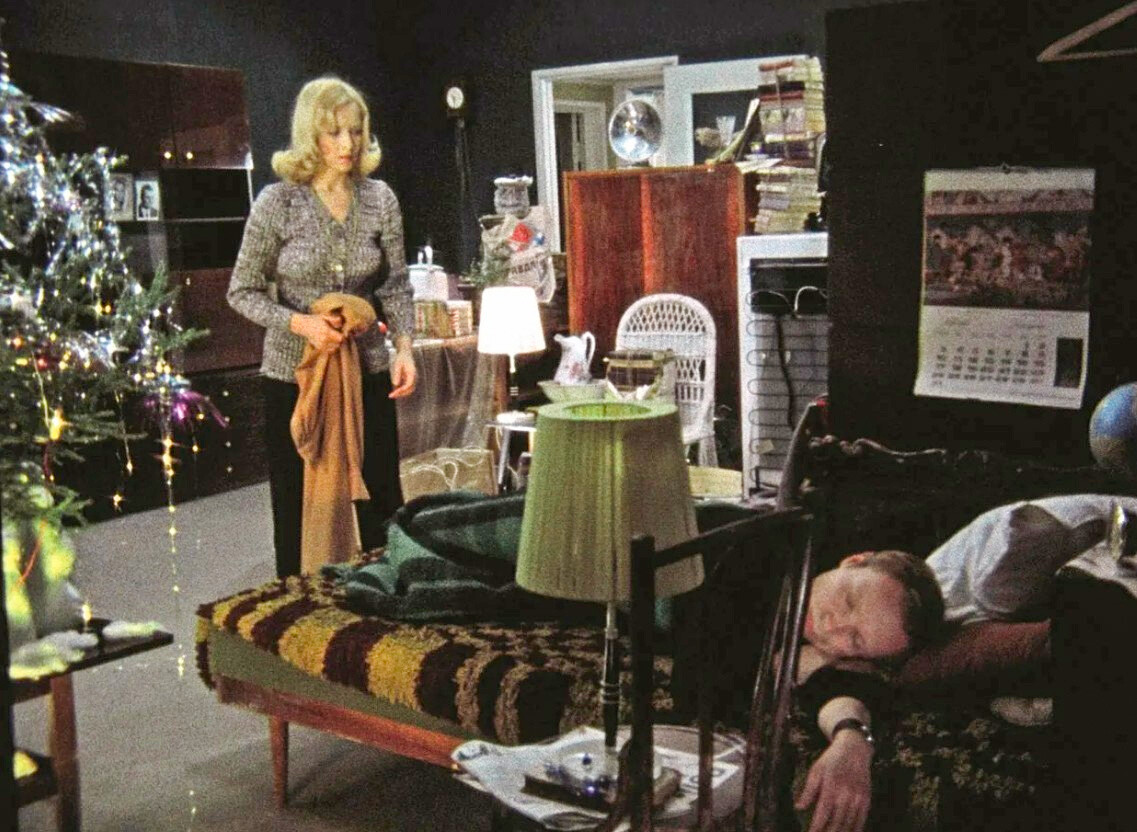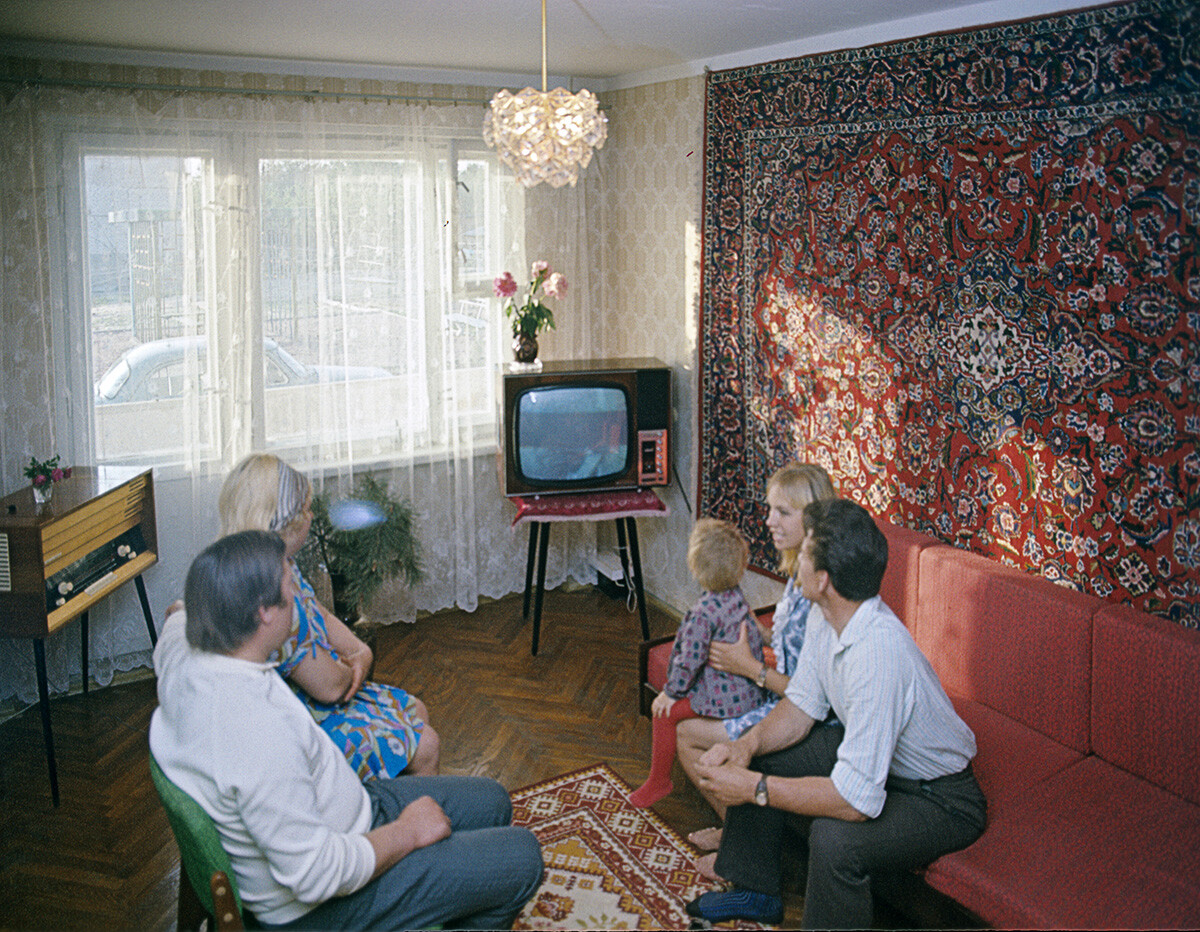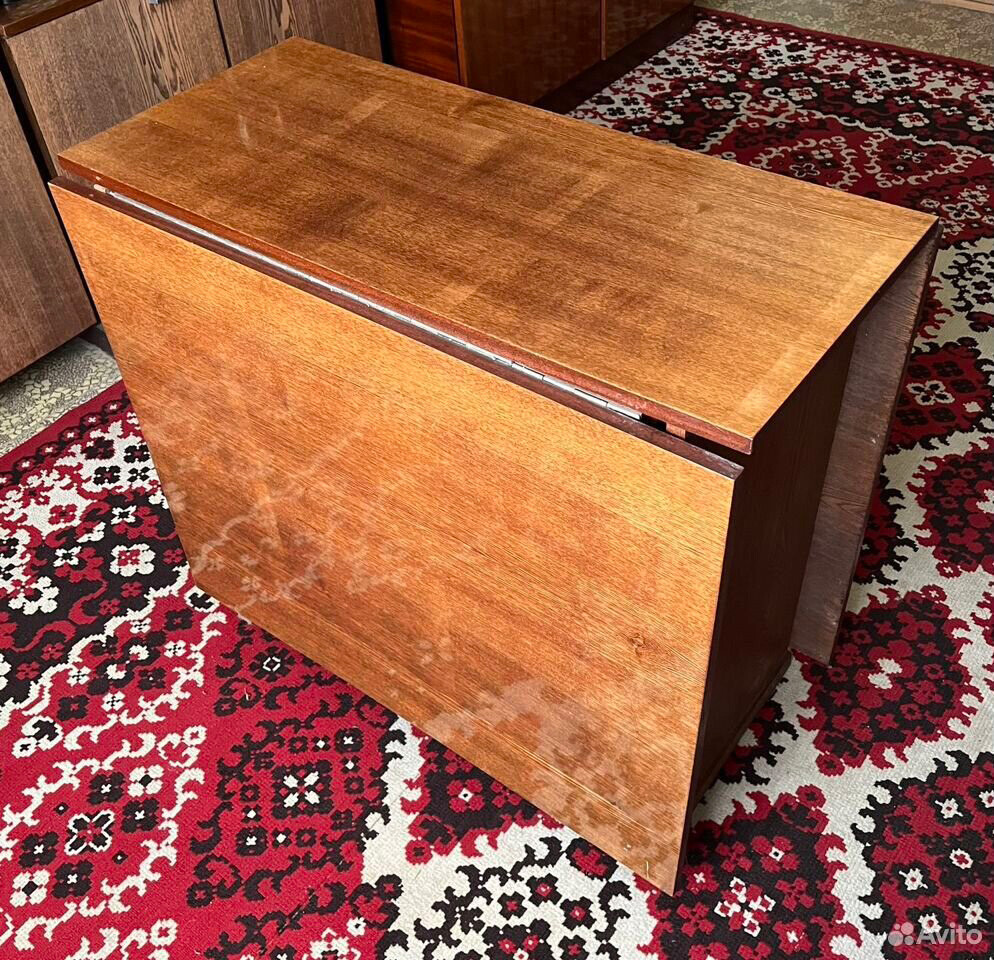
In the Soviet comedy ‘The Irony of Fate or Enjoy Your Bath!’, the main protagonist flies from Moscow to Leningrad, arrives at a block with the same address as his Moscow one, opens someone else’s door with his key and goes to sleep. He didn’t think that anything was amiss. First, because he was really drunk and, second, because the layouts and interiors of his Moscow apartment and someone else’s Leningrad apartment were almost identical.

Varnished wall furniture units from dark wood with books and red plush-upholstered chairs, dark wallpapers and doors covered with white paint, a neat coffee table of light wood with a table lamp… art directors highlighted key elements of the interiors, which were characteristic of many Soviet apartments of the 1970s, in this movie.
In the middle of the 2010s, ‘Soviet-style’ design began to appear more and more often in the interiors of Russian cafes, restaurants and apartments. And it’s not because the owners had no time or money to do any renovations. On the contrary: Soviet style connoisseurs hunt down Yugoslavian wall units and Czechoslovakian lead glass tableware, Soviet radiograms and suitcases, Polish tea sets and chairs from East Germany – both deficit and mass-produced items and furniture that filled apartments half a century ago.
Usually, apartment interiors of the Soviet period, mostly from the 1960s-1970s, are dubbed ‘Soviet style’. This is a localized, Mid-century style variant, which emerged in Europe after World War II, quickly reached the U.S. and, in time, also arrived in the Soviet Union.
Such a style solved furnishing problems for small apartments. As there was an acute housing shortage after World War II, the mass construction of blocks with standardized small apartments began. Heavyweight furniture from the beginning of the 20th century didn’t fit the new conditions of life. And, most importantly, it didn’t satisfy the mood of it.

“Any style is a statement of society about its worldview. After the war, people’s values changed dramatically, people fully felt the frailty of life, so the interiors turned simpler and lighter, as if a bit temporary. For instance, all furniture was now standing on legs: that’s one of the distinctive features of Mid-century, the style of the 1950s. Yet again, that’s the right decision for small apartments. The more of the floor is visible, the larger the room seems. Our brains evaluate the size of a room by the size of its floor that’s visible to our eye,” designer Yanina Trofimovich says.
Another distinctive feature of this Mid-century style – the appearance of furniture made of plywood. For example, armchairs and shelving. But, veneered varnished furniture was also relevant. “Many will remember varnished stands on legs or cupboards in their grandmas’ apartment,” Yanina says.

According to her, the furniture of specifically Soviet manufacture was not used much in the interiors of that time – no more than a quarter of the total amount. What was also considered to be Soviet furniture was mostly produced in Poland, Czechoslovakia, East Germany and Romania. In the USSR, some items were produced in Estonia and Latvia.
A project by French designer and blogger Gregory Lesterlin, developed in 2022 for a Moscow one-bedroom apartment, is a good example of interior stylization to resemble the USSR era.
“This was a project I really wanted to do for a long time. When I saw this apartment, I talked to the owner and asked: ‘Can I do what I want?’ He told me: ‘Yes, sure.’ So, I said I want to do a soviet apartment because of the view, because of everything about this place,” Gregory says.
The French designer also notes the similarities between European furniture items of the Mid-century era and Soviet ones:
“I like the soviet style, in terms of decoration. It is mostly about furniture – because we have pretty much the same in Europe, just organized differently.”
On the other hand, the USSR had its own features – for example, carpets on walls. And such a decoration choice, according to Gregory, can be presented today in an interesting way.
“The first time I saw a carpet on the wall, I thought it was a bit strange. But, if you do it nicely in the interior – I mean, if you find a nice one and style everything – it can look really good.”
A portrait of Vladimir Ilyich Lenin draws attention in his project.
“Lenin was the founder of the Soviet Union. So, I’m not going to put Stalin there – he is just a follow-up. So, if you want to talk about the Soviet Union, It’s Lenin and no one else. Maybe, it was a bit provocative, but I think it goes well with the style,” Gregory notes.
The depiction of the leader evoked contradictory emotions from the public, but, in a sense, it lent the project more popularity.
“This apartment was in a few magazines and there were, like, 50% who loved it, 50% who hated it, it was a scandal… But, this apartment ended up in the top 10 best apartments in Russia in 2022 (according to mydecor.ru– editor’s note). As long as professionals recognize the work, the rest is just a matter of taste,” Gregory Lesterlin claims.
To create a neo-Soviet interior, he advises to dive into studying history.
“People forget history too fast nowadays. So, read about the history, find photos, go to stores with old furniture. And just make it how you like it!”
Moderation separates a stylized interior from an interior that saw no renovation since the USSR era.
“You can’t directly follow the styles of the past: it’s all too easy to create the feel of obsolescence and a museum of not a very good quality,” Yanina Trofimovich believes. “It’s more interesting to create a style out of time, but with some attributes of the style from the 1950s, 1960s. You can only have a couple of vintage and truly precious pieces of furniture. The rest you can design in a modern style.”
Nonetheless, there are several basic principles that distinguish Soviet stylistics. They’re easy to replicate.
A sofa, bookcase and TV stand should all have clear, straight corners and all should stand on light cone-shaped legs.
Round shapes are allowed in appliances, like in the case of a fridge. You can even restore a Soviet ZIL fridge, which will definitely be a stylish highlight.
“Of course, you need a carpet. You can take a look at vintage kilims: they fit the aesthetics of those years quite well,” Yanina Trofimovich says.
But, she stops short of putting a Lenin portrait on the wall. “Portraits of leaders are more kitsch. However, Soviet paintings or graphics look stylish. Skiers, field workers, scenes at a pool or at a construction site – all will fit,” she believes.
Designer and St. Petersburg State University teacher Svetlana Vitkovskaya, in turn, draws attention to textures. She advises to use wallpapers in wall decoration and to put linoleum on the floor or plate it with parquet. It’s best to whitewash or paint the ceiling – and under no circumstances should you use stretch ceilings.

“When creating the interior, you can remember the wall units manufactured in East Germany and Yugoslavia. A necessary part of the interior – books and a cupboard with lead glass,” Svetlana stresses.
For a lounge room or a dining room, she recommends finding a varnished veneer folding table colored cherry or hazelnut and matching it with wooden chairs with soft upholstered seats. It’s important to pay attention to detail: hanging a carpet on the wall is a must and be sure to get a floor lamp, armchairs and a coffee table.

Despite its specificity, designers value ‘Soviet style’ and ‘Mid-century’ for how they can be integrated into any architectural design. “You can’t use classical style in a khrushchevka – that’s just laughable. But, you can create Mid-century in pre-Revolutionary housing, in new buildings, in a stalinka, in a khrushchevka – this style is unpretentious,” Yanina Trofimovich concludes.
Dear readers,
Our website and social media accounts are under threat of being restricted or banned, due to the current circumstances. So, to keep up with our latest content, simply do the following:
If using any of Russia Beyond's content, partly or in full, always provide an active hyperlink to the original material.
Subscribe
to our newsletter!
Get the week's best stories straight to your inbox